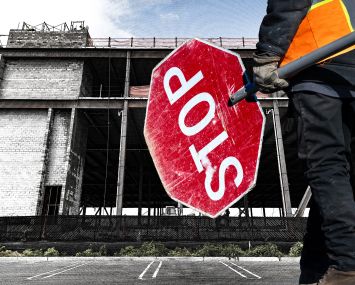Betting on Flex: Five Questions With Andrew Kupiec, Head of CBRE’s Hana
By Chava Gourarie May 26, 2020 11:58 am
reprints
With the state of the office-as-we-know-it in flux, some people think the answer lies in flex.
One of those people is Andrew Kupiec, CEO of CBRE’s flexible workspace platform Hana.
Every day, more companies are expanding or extending their remote working policies; some are expecting employees to work remotely through 2020, some indefinitely, some forever. That will significantly change tenants’ short-term office needs, with potentially long-term ramifications.
The company is positioning itself to take advantage of the dislocation in the flexible workspace market, and is targeting enterprise clients that are seeking out private workspaces, according to executive comments during the company’s first quarter earnings call.
Hana had announced its first New York City outpost just before the coronavirus outbreak, at Silverstein Properties’ Three World Trade Center in the Financial District. It plans to open ten locations nationwide in 2020, down from the 20 it had envisioned prior to the outbreak, per the call.
Commercial Observer spoke with Kupiec about Hana’s plans for the future, and how he views the shifting office market.
Commercial Observer: What are you expecting to see in the market as people return to some semblance of normalcy?
Andrew Kupiec: As we turn the corner here, hopefully later on in the summer or in the fall, we’re a firm believer that stable, trusted flex operators are well positioned to meet the accelerated demand around flexibility.
What we’re seeing is there’s demand in three areas. Employees are really looking for more flexibility in the way they work and in the places they work. And also demand for employers looking to optimize their space, who are looking at their real estate needs for the next one-to-three year period. Third, there’s demand from landlords that have a variety of assets, with changing occupancy levels, about how to best deploy that space.
Can you define what you mean by flexibility since there are lots of different models within the coworking/shared workspaces sector?
We definitely gear it much more toward a professional real estate conversation as opposed to, you know, a per-desk coworking conversation. And the other thing to highlight here is, you know, most companies in this sector have really focused a big part on community, and around the programming, the event side. We really went the opposite way; we like to say you can have community when you want it, but it’s really your space. Our dedicated suites, they’re effectively operating like a multi-tenant floor would in a traditional office building, there are shared areas and kitchens you can use around our hub, but mainly you’re using your own dedicated space and it’s private.
As this crisis unfolds, do you think we should expect to see a lot of space in the flexible sector change hands? And do you think Hana has a role to play in that?
We’ve been asking ourselves how we can help landlords in particular, asset owners, in this volatile time where some coworking flex providers might close because of financial issues, or give back space to consolidate their footprint, and landlords that operate their own flex spaces might not want the operational overhead.
That’s an area where Hana is really uniquely positioned. We are able to step in in some cases where there might be a defunct space and offer continuity by operating the existing space; we can turn it into a Hana, or we can run it white-label for the owner. And we also have capital, our ability to come in and stabilize and help partner with the owner is part of our core value proposition.
The vast majority of our spaces and commitments in 2020 are on some form of revenue-share or partnership model, and we’re deploying capital. That’s really important as you think about the next phase of flex—if we’re going to step in and help operate or help partner with owners we may want to have skin in the game.
Looking at office trends in the next six-to-eighteen months, what additional challenges do you see for cities, such as New York and San Francisco, that are reliant on public transportation?
It’s going to be a real challenge, we can’t control the exterior factors. I won’t predict what’s actually going to happen, but what we’re doing is, we’re rotating when we’ll be coming in, we’re encouraging employees to walk or bike, depending on where they live. But if you’re commuting from outside the city, and I live in New Jersey as an example, you know, that’s absolutely a challenge.
But with that challenge, we think there’s a huge opportunity. We use the term ‘hub and spoke,’ what that means is that potentially the suburbs are revitalized, particularly for flex. And having a space that employees visit from time to time is becoming more relevant in the COVID-19 world, not having to go into the city every day to your core office, potentially having access to a spoke.
This interview has been edited and condensed for clarity.


